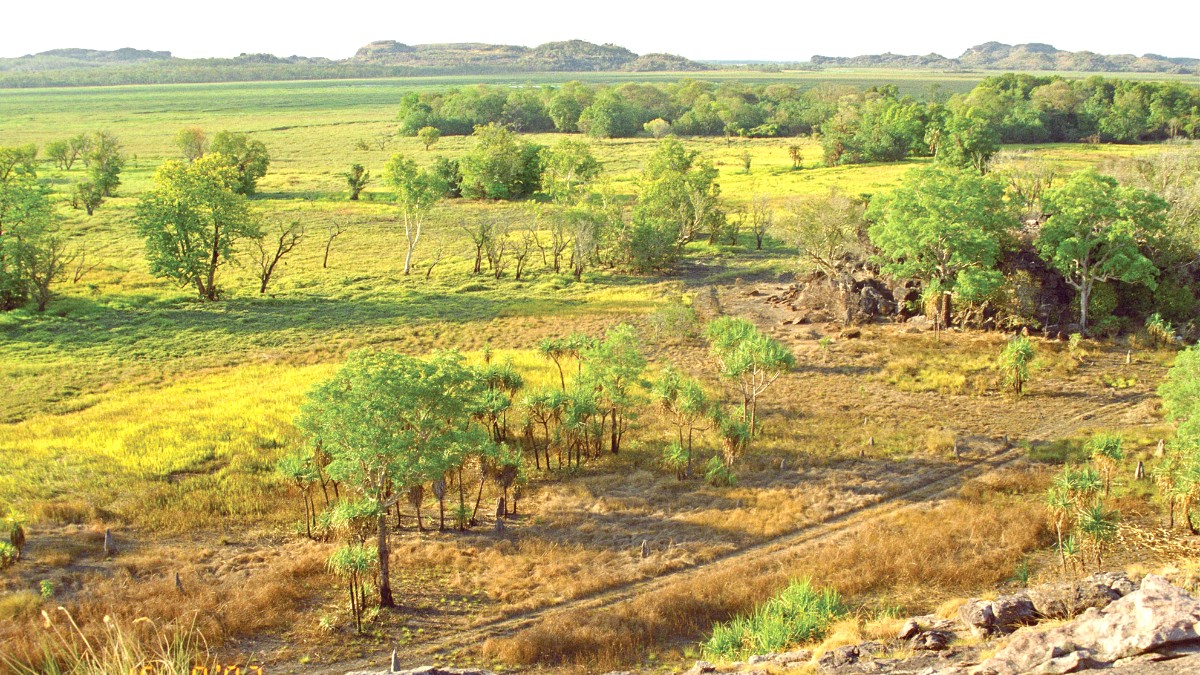
Northern Territory, Australia
Standing atop a sandstone outcrop, watch a sunset paint the sky in fiery hues over endless floodplains. Kakadu moments of awe and deep connection to the land. This guide readies you for a journey into the heart of Australia's Top End. Expect adventure, cultural insight, and experiences that resonate long after your visit. Anticipate an unique adventure.
Kakadu National Park holds ancient landscapes, thriving wildlife, and a living culture. This dual World Heritage site welcomes exploration of its vastness and unique character.
Its geographical features range from Arnhem Land escarpment with deep gorges to expansive floodplains and dense monsoon rainforests. These varied environments support incredible life diversity. Kakadu is a prime location for wildlife observation. The park home to a rich array of animal species: saltwater crocodiles, over one-third of Australia's bird species, wallabies, and dingos. Its cultural heritage equally compels, marked by thousands of Aboriginal rock art sites over 65,000 years old. These sites offer deep insights into Traditional Owners' beliefs and history.
Kakadu National Park sprawls across almost 20,000 square kilometers within Australia's Northern Territory. It matches Slovenia in size, standing as one of Australia’s largest national parks. The park sits approximately 171 kilometers (106 miles) southeast of Darwin, the capital. This spot places it squarely within Australia's 'Top End,' a tropical zone with distinct wet and dry seasons.
The park's diverse geography includes four major river systems: the East Alligator, South Alligator, Wildman, and Cooper Creek. These rivers create extensive floodplains. Towering above these plains are dramatic sandstone escarpments. The landscape transitions into open woodlands, savannahs, and wetlands, each supporting a wide range of plant and animal life.
Kakadu National Park is a history spanning over 65,000 years, home to one of the world's longest continuous living cultures.
The Bininj and Mungguy people have lived on and cared for this land for countless generations.
The park's UNESCO World Heritage listing recognizes its profound cultural heritage and natural values.
The landscape itself is woven with Dreamtime stories, recounting creation by ancestral beings.
Since 1979, Kakadu has been jointly managed by Parks Australia and the Traditional Owners.
This geographical diversity means that Kakadu presents a different face depending on the season. Floodwaters transform vast areas into inland seas during the wet months. They recede to expose dry, cracked earth and shrinking waterholes during the dry period.
Boat cruises through wetlands, walking along ancient rock art galleries, hiking to waterfalls, or joining a scenic flight for aerial views are popular activities. The park's distinct wet and dry seasons offer different experiences. Both seasons have unique perspectives.
Kakadu has varied accommodation options, from basic bush camping to comfortable lodges. This combination of natural splendor and deep cultural roots makes Kakadu a distinctive and rewarding destination. It is a chance to connect with a landscape of ancient stories and remarkable beauty.
Experiencing this ancient culture forms a meaningful aspect of any visit.
The park has two main seasons, often divided into six traditional Aboriginal seasons. These seasons shape accessibility and the overall visitor experience.
Wettest, hottest. Monsoonal rains, thunderstorms, high humidity. Temperatures 24-34°C. Flash flooding, impassable roads.
Wet-to-dry transition. Heavy rains clear, floodwaters recede, humidity drops. Temperatures 23-33°C.
Cooler temperatures, low humidity, clear skies. Temperatures 20-32°C. Waterholes full.
Kakadu National Park has a tropical monsoonal climate. It broadly divides into a Wet Season and a Dry Season. The traditional Aboriginal calendar refines year-long weather.